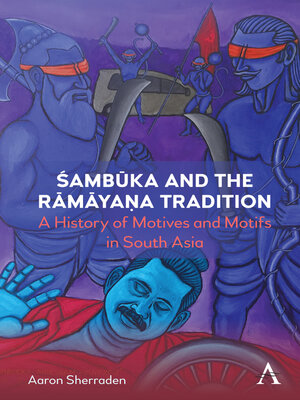Śambūka and the Rāmāyaṇa Tradition
ebook ∣ A History of Motifs and Motives in South Asia · Anthem World Epic and Romance
By Aaron Sherraden

Sign up to save your library
With an OverDrive account, you can save your favorite libraries for at-a-glance information about availability. Find out more about OverDrive accounts.
Find this title in Libby, the library reading app by OverDrive.



Search for a digital library with this title
Title found at these libraries:
| Library Name | Distance |
|---|---|
| Loading... |
According to Vālmīki's Sanskrit Rāmāyaṇa (early centuries CE), Śambūka was practicing severe acts of austerity to enter heaven. In engaging in these acts as a Śūdra, Śambūka was in violation of class- and caste-based societal norms prescribed exclusively by the ruling and religious elite. Rāma, the hero of the Rāmāyaṇa epic, is dispatched to kill Śambūka, whose transgression is said to be the cause of a young Brahmin's death. The gods rejoice upon the Śūdra's death and restore the life of the Brahmin. Subsequent Rāmāyaṇa poets almost instantly recognized this incident as a blemish on Rāma's character and they began problematizing this earliest version of the story. They adjusted and updated the story to suit the expectations of their audiences. The works surveyed in this study include numerous works originating in Hindu, Jain, Dalit and non-Brahmin communities while spanning the period from Śambūka's first appearance in the Vālmīki Rāmāyaṇa through to the present day. The book follows the Śambūka episode chronologically across its entire history—approximately two millennia—to illuminate the social, religious, legal, and artistic connections that span the entire range of the Rāmāyaṇa's influence and its place throughout various phases of Indian history and social revolution.







